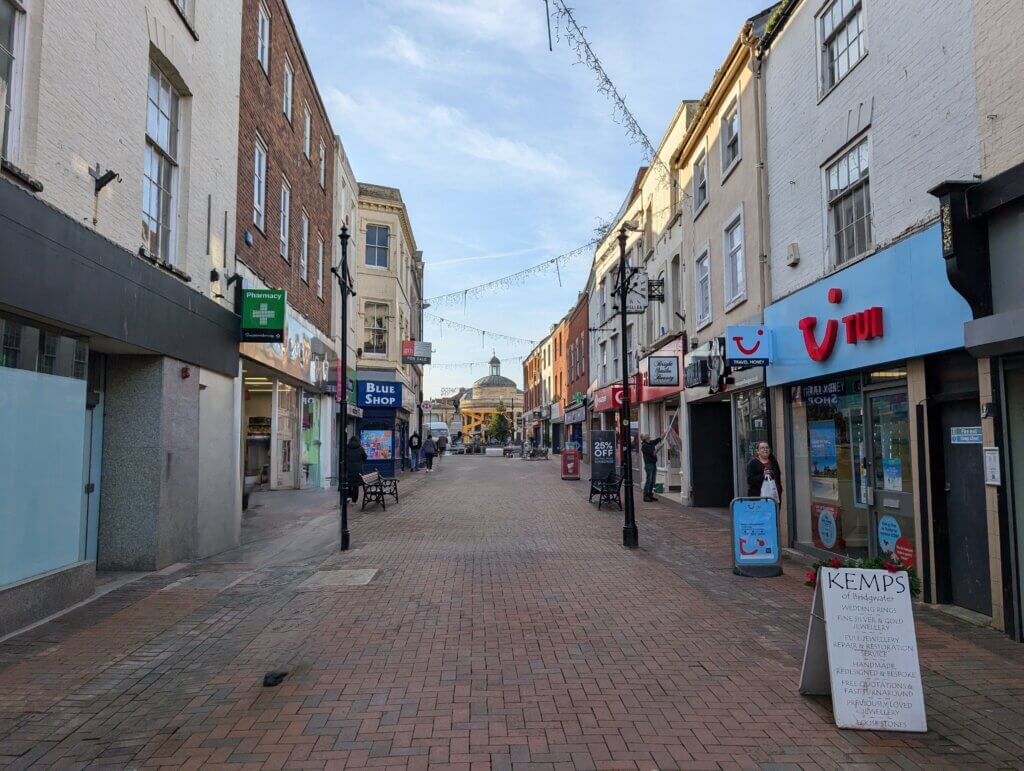Class D – Use Class E and more to a temporary commercial use
Permitted Development right Class D allows for the temporary commercial use of either a Use Class E building (shops, offices etc.), betting office, payday loan shop or hot food takeaway to a Use Class E, displays of art, museum, public library or a public hall.
These buildings can be used for a period of up to 3 years for anything in Use Class E, displays of art, museum, public library or a public hall. Whilst Class A of Part 3 allows for the permanent change of say a betting office to a shop, the reverse change would require full planning.
Therefore, if the change from say a hot food takeaway to a shop or office is only required for up to 3 years, then this Class D would be a far better option to get a temporary commercial use. Other changes to art galleries, libraries or halls are not a features of a permanent change. So this Class D is the only option.
This is a one time change of use to a temporary commercial use and is for areas of up to 150 sq m. However being flexible you can opt for a different use within that 3 year period.
The full legislation to allow a temporary commercial use within Class D can be found below.

Legislation
Class D – commercial, business and service etc to temporary flexible use
Permitted development
D. Development consisting of a change of use of a building and any land within its curtilage—
(a) from a use falling within one of the following provisions of the Use Classes Order—
(i) article 3(6)(n) (betting office);
(ii) article 3(6)(o) (pay day loan shop);
(iii) article 3(6)(r) (hot food takeaway); or
(iv) Class E (commercial, business and service) of Schedule 2,
(b) to a flexible use falling within one of the following provisions of Schedule 2 to that Order—
(i) Class E (commercial, business and service);
(ii) Class F.1(b) (display of art);
(iii) Class F.1(c) (museum);
(iv) Class F.1(d) (public library or public reading room); or
(v) Class F.1(e) (public hall or exhibition hall),
for a single continuous period of up to 3 years beginning on the date the building and any land within its curtilage begins to be used for the flexible use or on the date given in the notice under paragraph D.2(a), whichever is the earlier.
Development not permitted
D.1 Development is not permitted by Class D if—
(a) the change of use relates to more than 150 square metres of floor space in the building;
(b) the site has at any time in the past relied upon the permission granted by Class D;
(c) the site is, or forms part of, a military explosives storage area;
(d) the site is, or forms part of, a safety hazard area;
(e) the building is a listed building or a scheduled monument;
Conditions
D.2 Development is permitted by Class D subject to the following conditions—
(a) the developer must notify the local planning authority of the date the site will begin to be used for one of the flexible uses, and what that use will be, before the use begins;
(b) at any given time during the 3 year period referred to in Class D the site is used for a purpose or purposes falling within just one of the use classes comprising the flexible use;
(c) the site may at any time during the 3 year period change use to a use falling within one of the other use classes comprising the flexible use, subject to further notification as provided in paragraph (a);
(d) for the purposes of the Use Classes Order and this Order, during the period of flexible use the site retains the use class it had before changing to any of the flexible uses under Class D; (e) the site reverts to its previous lawful use at the end of the period of flexible use;
Interpretation of Class D
D.3 For the purposes of Class D—
“flexible use” means use of any building or land for a use falling within the list of uses set out in Class D(b) and change of use (in accordance with Class D) between any use in that list.
Page Updated: 4th February 2025



